#Helmut Weber
Text

Just sayin...
0 notes
Text
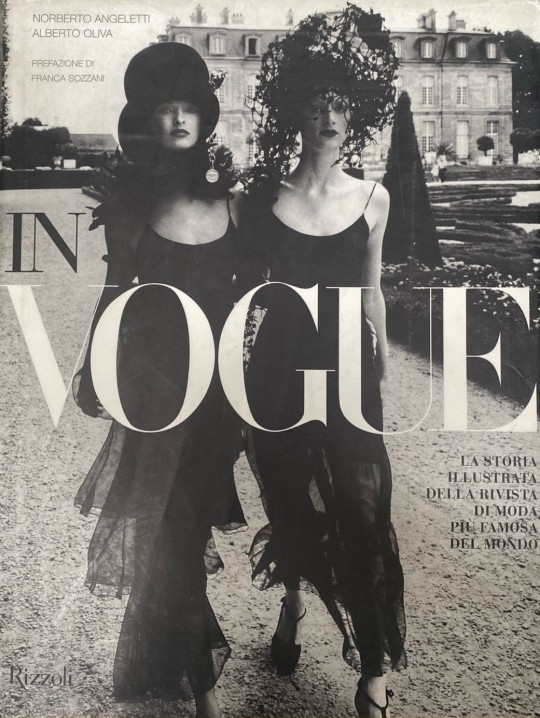
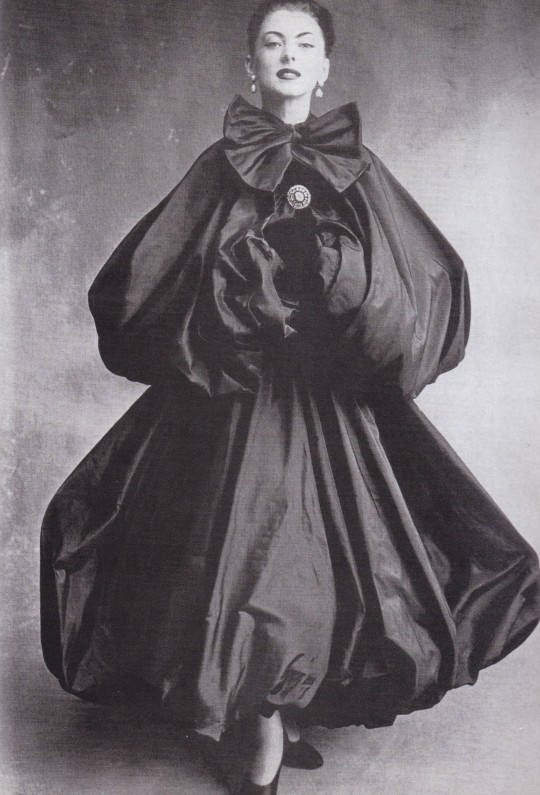
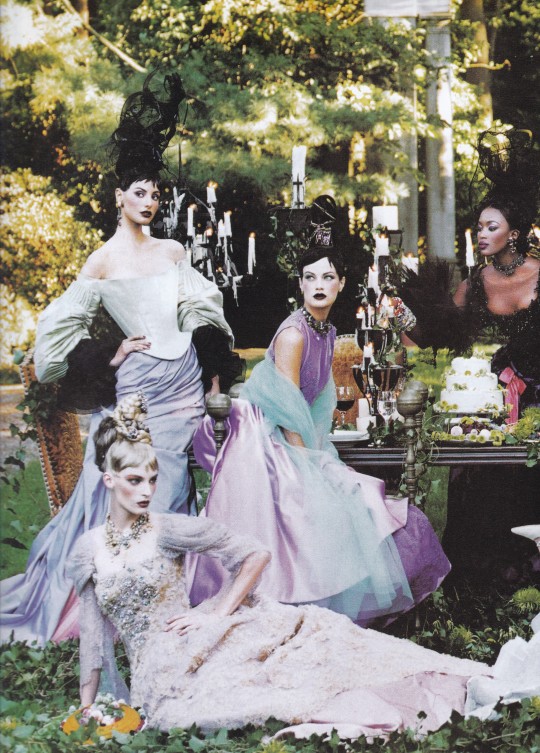


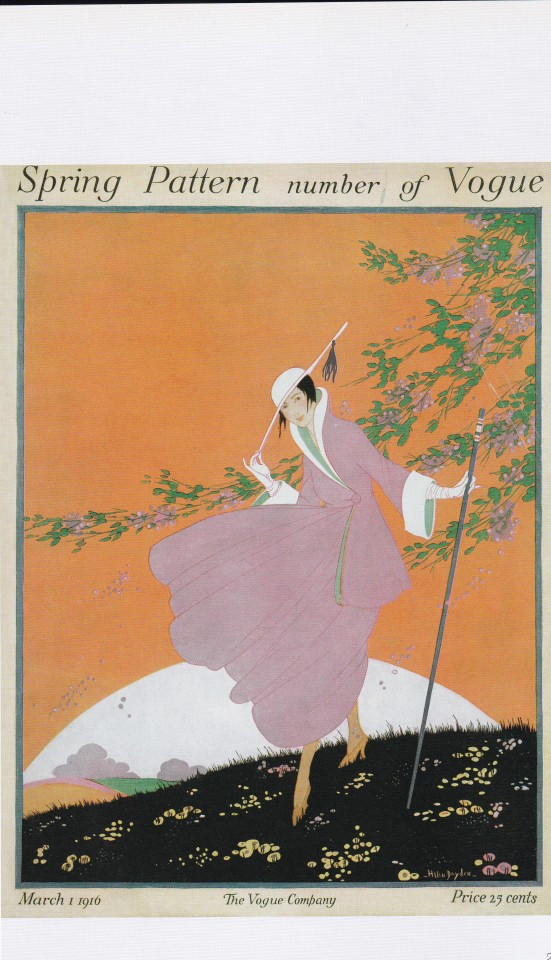
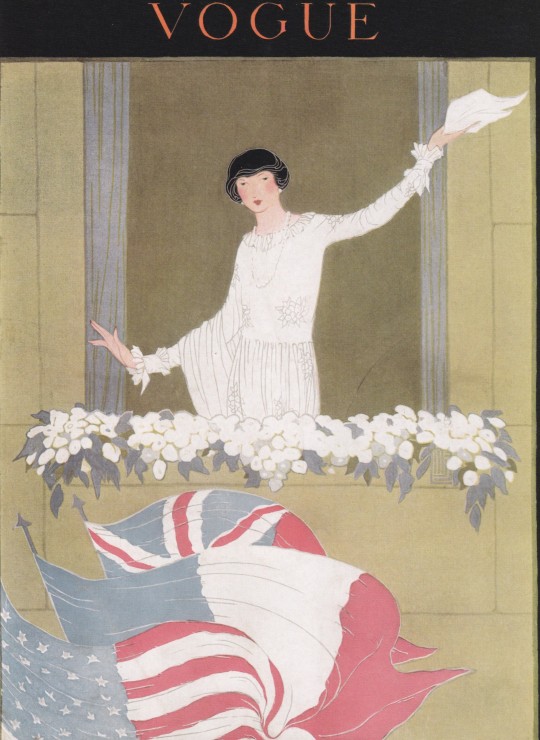
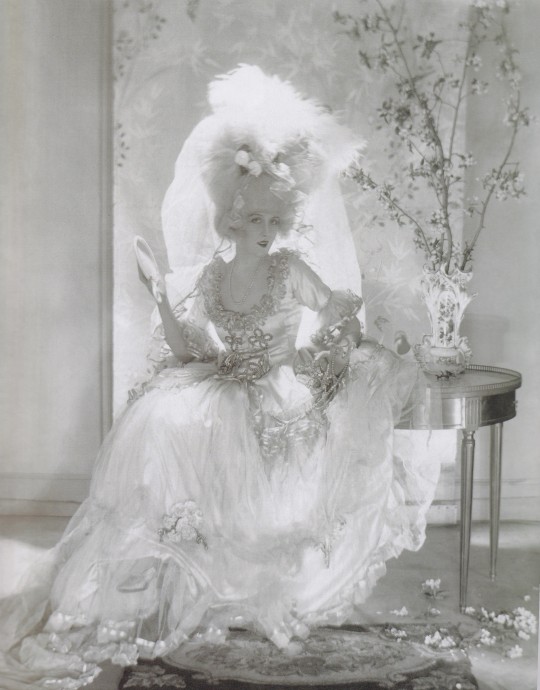
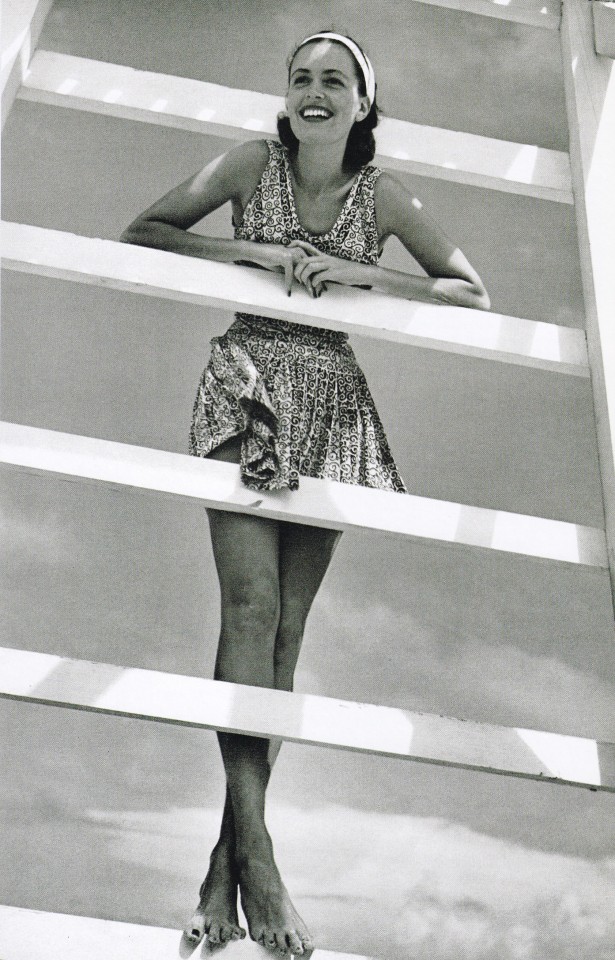
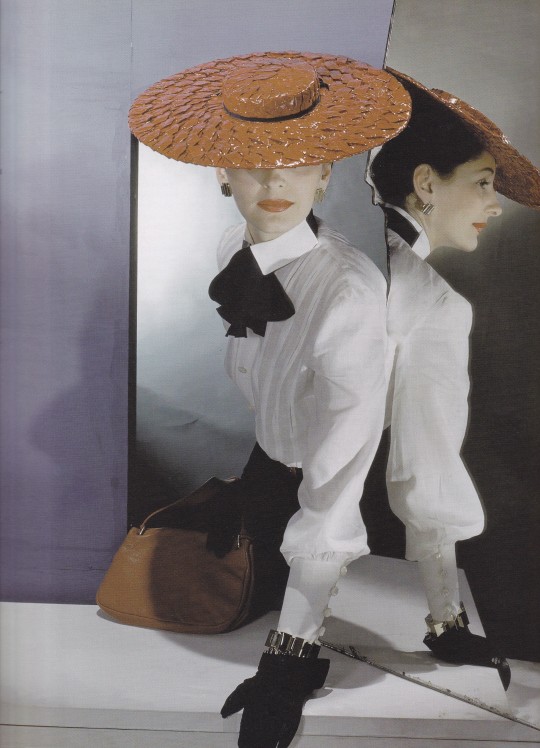
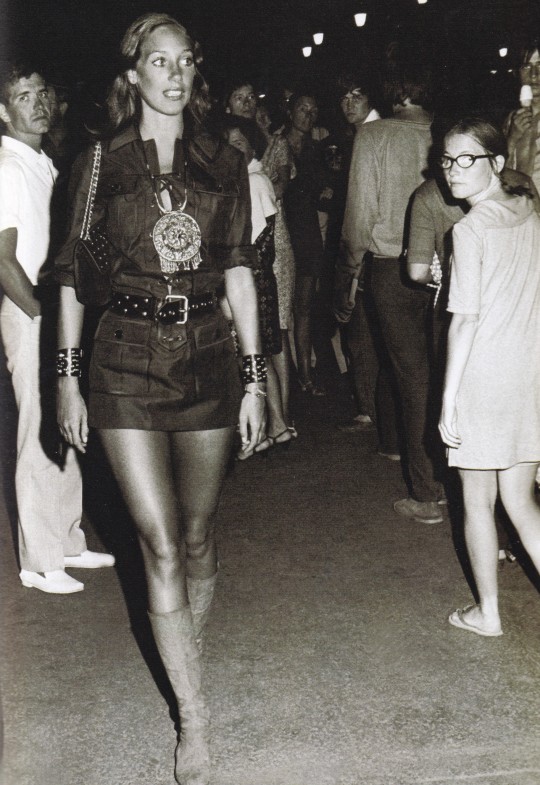
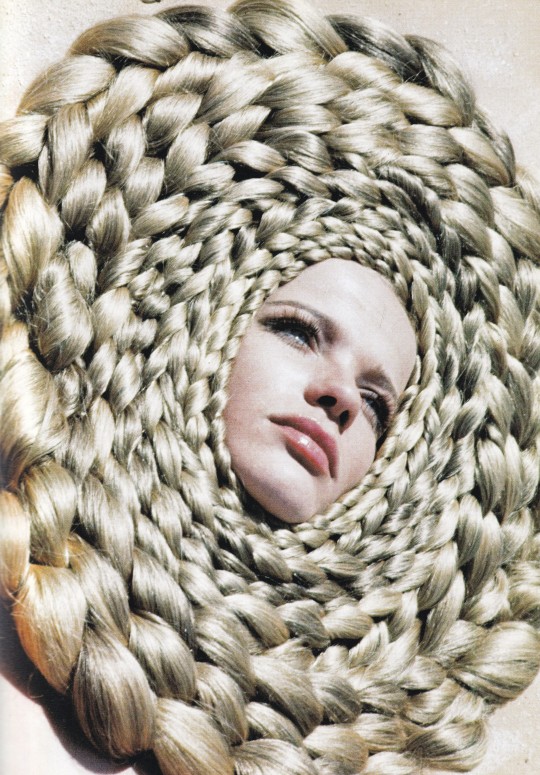


In Vogue
Norberto Angeletti, Alberto Oliva
Prefazione di Franca Sozzani
Rizzoli, Milano 2007, 411 pagine, 23,8x31cm, ISBN 978-88-17-01 29-9
euro 100,00
email if you want to buy [email protected]
Un libro con la storia della rivista di moda più prestigiosa al mondo nella prima edizione del 2007. Centinaia di copertine e immagini d'archivio raccontano il percorso di Vogue a partire dai suoi inizi come gazzetta mondana fino alla sua evoluzione come icona delle riviste di stile. In queste pagine sono riprodotti i lavori di alcuni fra gli artisti, gli illustratori e i fotografi più importanti del ventesimo secolo: Edward Steichen, Toni Frissel, Erwin Blumenfeld, Irving Penn, Richard Avedon, Helmut Newton, Annie Leibovitz, Mario Testino, Steven Klein, Bruce Weber e Herb Ritts. Grazie a una meticolosa ricerca, gli autori hanno raccolto i commenti di personaggi come Anna Wintour, attuale direttrice di Vogue, Grace Mirabella, direttrice dal 1971 al 1988, Kohle Yohannan, scrittore e storico di arte e design, oltre a interviste con editor e fotografi. Il libro è inoltre arricchito da un saggio di Susan Sontag, che collaborò a lungo con la rivista, e da articoli scritti da molti personaggi di fama mondiale, fra i quali Truman Capote, Aldous Huxley, Richard Burton e Federico Fellini.
14/05/24
#Vogue#Franca Sozzani#Steichen#Blumenfeld#Irving Penn#Avedon#Testino#Bruce Weber#Leibovitz#Helmut Newton#HerbRitts#first edition#fashion books#fashionbooksmilano
23 notes
·
View notes
Text

Helmut Lang for Fantastic Man: Issue 4 (Autumn/Winter 2006)
Photography by Bruce Weber
follow on Instagram for more
60 notes
·
View notes
Text



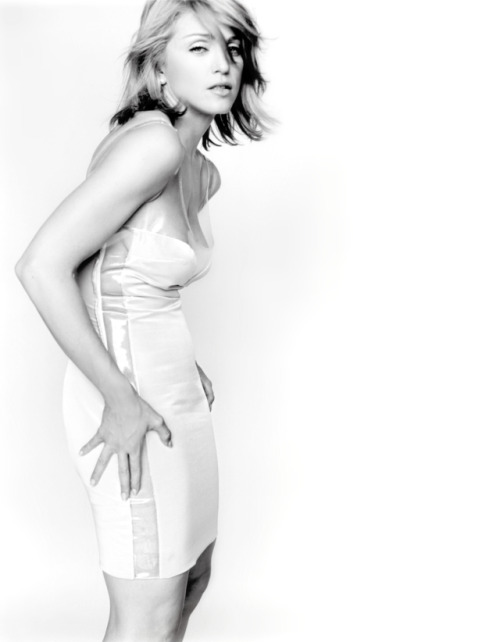






Birthday Girl 👑
#madonna#steven meisel#bruce weber#herb ritts#mario testino#peter lindbergh#helmut newton#jean baptiste mondino#ellen von unwerth#patrick demarchelier#steven klein
18 notes
·
View notes
Photo

Aline Weber at Helmut Lang FW12
10 notes
·
View notes
Text

#ellierosemclean#elliemclean#ellierosemcleanphotography#peter lindbergh#bruce weber#art#culture#fashion#helmut newton#mario sorrenti#italywedding#wedding#bridaldress#love#candidphotography
0 notes
Text

Born on this day: exquisite Italian-born supermodel (photographed by greats like Richard Avedon, Bruce Weber, Helmut Newton and Francesco Scavullo) turned mercurial and intense actress turned animal behaviour authority Isabella Rossellini (née Isabella Fiorella Elettra Giovanna Rossellini, 18 June 1952). Among the many achievements of the daughter of actress Ingrid Bergman and director Roberto Rossellini: she remains the definitive spokeswoman for Lancôme cosmetics and maverick filmmaker David Lynch’s single greatest muse. Her performance as tormented sadomasochistic nightclub chanteuse Dorothy Vallens in Lynch’s 1986 masterpiece Blue Velvet (a role originally intended for Helen Mirren) alone ensures Rossellini cinematic immortality. Pictured: Rossellini photographed at the Cannes Film Festival by Jean-Christian Bourcart, 1990.
#isabella rossellini#david lynch#supermodel#dorothy vallens#blue velvet#lobotomy room#perdita durango#wild at heart#roberto rossellini#ingrid bergman#death becomes her
32 notes
·
View notes
Text
Isabella Rossellini

Buon compleanno, Isabella Rossellini!
Isabella Rossellini è modella, attrice, scrittrice, produttrice, regista, etologa e fiera fondatrice della fattoria organica MAMA Farm.
Una vita intensa in cui ha saputo costruirsi e ricostruirsi seguendo le proprie attitudini.
Figlia d’arte di due figure iconiche del mondo del cinema, l’attrice svedese Ingrid Bergman e il regista italiano Roberto Rossellini, è nata il 18 giugno 1952 a Roma.
Fin da piccola ha frequentato i set cinematografici, anche se il suo più grande interesse era per i costumi, più che per la recitazione. Ha studiato all’Accademia di costume e di moda della capitale e iniziato a lavorare come assistente costumista per alcuni film del padre. Ha debuttato sul grande schermo nel 1976, nel cast di Nina, accanto a sua madre, diretta da Vincente Minnelli.
Ha recitato in cast internazionali con registi del calibro dei fratelli Taviani, David Lynch, Nikita Mikhalkov, Abel Ferrara, Peter Greenaway, per citarne alcuni.
Nel 1979 si è trasferita negli Stati Uniti dove ha iniziato a lavorare come modella. Fotografata da artisti come Bruce Weber, Richard Avedon, Helmut Newton, Annie Leibovitz e Robert Mapplethorpe, è comparsa sulle copertine delle maggiori riviste femminili come Vogue, Marie Claire, Harper’s Bazaar, Vanity Fair e Elle.
Nel marzo 1988 le è stata dedicata una mostra fotografica, chiamata Ritratto di donna, presso il Museo d’Arte Moderna di Parigi.
Anche la pop star Madonna ne ha celebrato la bellezza inserendola prima nel videoclip Erotica e nel libro fotografico Sex.
L’industria cinematografica statunitense, all’inizio, diffidava di lei, la sua fortuna è stata quella di aver lavorato per produzioni indipendenti o europee grazie alle quali non è stata etichettata in alcun modo.
Protagonista di diversi documentari, nel 2023 è stata diretta da Alice Rohrwacher in La chimera, presentato in concorso al Festival di Cannes. Nello stesso anno ha ricevuto il premio alla carriera ai David di Donatello e alla Festa del Cinema di Roma.
Insignita di altri prestigiosi premi, ha ricevuto un Independent Spirit Awards come migliore attrice protagonista per la sua parte in Velluto blu, una nomination ai Golden Globe come migliore attrice in una miniserie per la tv per il suo ruolo in Crime of the Century ed una nomination agli Emmy Award come guest star nella serie drammatica Chicago Hope.
È consigliera del Wildlife Conservation Network e direttrice della Howard Gilman Foundation, istituzione impegnata nella salvaguardia della natura e nella conservazione dell’arte, della fotografia e della danza. Ha anche collaborato con il Central Park Conservancy e sostiene varie associazioni per l’addestramento di cani-guida per persone cieche. È stata anche amministratrice della George Eastman House che le ha conferito un premio onorario per il sostegno alla conservazione dei film.
Ha scritto diversi libri tra cui l’autobiografia, Some of me, nel 1997; Looking at Me (on pictures and photographers) nel 2002 e In the name of the Father, the Daughter and the Holy Spirits: Remembering Roberto Rossellini, nel 2006, che è stato accompagnato dal cortometraggio di Guy Maddin Mio padre ha 100 anni in cui ha interpretato quasi tutti i ruoli, maschili e femminili. In My Chickens and I, del 2018, documenta la sua esperienza e ricerca sull’allevamento di galline di razze antiche.
Il coraggio di sperimentarsi l’ha portata a diventare regista a cinquant’anni e il grande amore per gli animali a conseguire una laurea in etologia a sessanta.
La prima parte della sua vita è stata definita dalla fama di altre persone, in primis i celebri genitori e poi i suoi celebri compagni come Martin Scorsese, Gary Oldman e David Linch.
Nella seconda è prevalsa la passione per gli animali e la natura.
Trascorre gran parte del suo tempo al MAMA Farm, azienda agricola incentrata sulla biodiversità che ha fondato nel 2013 sulla costa sud di Long Island, nello stato di New York.
Attenta alla sostenibilità e alla moda etica, per cui ha condotto numerose campagne, ha istituito un fondo che eroga borse di studio che premiano studenti e studentesse di moda che integrano la lana di pecore di razza antica e filiera certificata nelle loro collezioni.
Ha anche sviluppato una capsule collection utilizzando i filati provenienti dalla sua fattoria.
Regista di deliziosi film educativi sugli animali in cui si traveste da verme, mosca, lumaca.
Isabella Rossellini, libera, originale, ironica, intelligente, impegnata, sul suo profilo Instagram, in cui è molto attiva, si definisce: attrice, film maker e contadina.
Accetta con disinvoltura il passare degli anni, ama le sue rughe e continua a sfoggiare il suo bellissimo sorriso, lanciando messaggi di consapevolezza e libertà femminile, insistendo sulla cultura della cura dell’ambiente e di ogni specie animale.
Ritiene l’arte di invecchiare un oscillare tra ottimismo e incoscienza, tra inseguire i sogni e farsi sopraffare dai problemi, gettarsi in nuove sfide, come un corso di ornitologia, e non considerare mai di essere nell’ultimo atto della propria vita.
0 notes
Text
youtube
Nomos and Narrative covern
1.
"Chabos wissen wer der Aby ist" (Friedrich Weber-Steinhaus). In seinem Text zu einem Grund der Autorität, der mystisch sein soll, erinnert Derrida gleich zu Beginn, also am Anfang, an eine Kulturtechnik, die man (A-)Dressieren nennt. Sie mustert. Dass er gleich am Anfang darauf zu sprechen kommt, ist rekursiv. Immer dann, wenn etwas anfängt, fängt nämlich auch das Recht an. Anfangen ist eine juridische Kulturtechnik, die unterschiedlich funktionieren kann. (A-)Dressieren ist eine von mehren Techniken, anzufangen. To (a-)dress, to season: d.i. lat. condio/ condire. Ab urbe condita, das heißt: seitdem das Kreisende reizend ist.
In den Bild-und Rechtswissenschaften wird die Kulturtechnik der (A-)Dressierung mit einem Begriff der Rhetorik assoziiert, dem Begriff decorum. Man kann ihn als nomen actionis lesen (so wie nomos, das dann zum Beispiel das Zäunende meint). Liest man ihn als nomen actionis, dann kann man ihn als Musterung oder Mustern, das Musternde übersetzen. Dieser Begriff kann in edler Einfalt und stiller Größe übersetzt werden, dann übersetzt man in ihm Ton so, wie Marti Fischer den Haftbefehl übersetzt. Edel einfältig, still und groß übersetzt lautet das deutsche Wort für decorum Angemessenheit. Helmut Rahn, natürlich nicht der Polarisierungsprofi, Fortunaspezialist und Fußballer Helmut Jahn, sondern sein adretter Doppelgänger, der Frankfurter Professor Helmut Jahn übersetzt decorum zum Beispiel genau so. Adrett und sauber definiert sagt er, decorum bezeichne das Angemessene und die Angemessenheit. In der Frankfurter Schule, Abteilung Nichtbenjamin, spricht man von einem Sinn für Angemessenheit, der edel, einfältig, still und groß erscheint, weil er so sein soll. Es gibt ein Buch dazu, das ist keine wilde Sache, kann man gut und ruhig lesen, es ist sauber definiert. Nur: Keine (A-)Dressierung ohne Polarisierung. Eine andere, nicht so edle, nicht nur einfältige, sondern multiple, laute und minore Übersetzung von decorum wäre das Passierende, Durchgehende.
Tomaten, zum Beispiel faule Tomaten, die im Gesicht eines Redners erst passiert werden, sind dann auch passiert. Paene omnia decent schreibt Quintilian, natürlich erst zum Ende hin, denn er schreibt das im Kontext von Anfängerübungen, bei denen man die Leute nicht zu schnell abschrecken will. The institution is the massage, zumindest bei Quintilian stimmt das mal. Nicht nur die Angemessenheit mustert, nicht nur sie ist musterhaft. Das Durchgehende, Passierende, Passionierte, Passierte mustert auch. Pathosformeln sind auch musterhaft und so musterbar, wie anders durch Wunder wunderbar wird. Das Musterbare ist dann als Potentielles schon voll da. Keine (A-)Dressierung ohne Polarisierung. Ruhe mag zwar erste Bürgerpflicht sein, aber dann ist Krach die Pflicht der Anderen. Das mag witzig klingen, bei den laufenden Protesten zu den Konflikten um Gaza oder die Ukraine bleibt es nicht im Witz.
Es gibt eine höfliche (polite) und polizeiliche Vorstellung: Polarisieren tut immer nur der Andere. Man selbst (a-)dressiere, der Andere polarisiere. Von der Metaphysik der Sitten und Gesitteten (der Kostüme und Kostümierten, Trachten und Betrachtungen, Mantel oder Teigtaschen) bis in die Peer-Review-Verfahren von Zeitschriften ist die Kulturtechnik der (A-)Dressierung und Polarisierung heute verfolgbar, bis heute gründet darin auch Normativität, Autorität, Recht und....Effektivität. Die Perzeption ist in den Falten. Die höflichen Insider adressieren, die draußen sein sollen, polarisieren. Nun ist aber Rom schon polis und polus, also eine PliCity, um die, in und an der sich alles dreht und in der Recht nicht nur Recht ist, sondern auch Regen. Die Gewalt ist nicht nur Gewalt und die Macht nicht nur Macht. Der Begriff des Rechts ist, wie die Begriffe für Gewalt und Macht, übersetzbar, indem man die (A-)Dressierung und Polarisierung deutlich macht. Dann muss man Recht auch mit dem Worten Regen/ Regung übersetzen. Schon im Rechtsbegriff ist effektiv, was sein Äußeres und Unbegriffenes sein soll. Dass Wissenschaftler etwa in dem von Cassin herausgegebenen Lexikon der Unübersetzbarkeit behaupten, der Rechtsbegriff sei in Begriffen wie rego/ regere, nicht aber in Begriffen wie rigo/ rigere verankert, ist ja nicht so zu verstehen, das die Zensur absolut ist. Der Rechtsbegriff ist in Begriffen wie regere/ rego, Direktion, Regierung, Regime, Regula, rectum zwar verankert. Das heißt aber, dass er in Begriffen wie rigere/ rigere, regen, reigen, reichen bewegt ist oder schwimmt. Ohne zu schwimmen kommt kein Begriff durch vague Assoziationen.
Die ständige und stabile Seite des Rechts wird in anderen Begriffen deutlich als die unbeständige Seite. Dass es die Tendenz gibt, alles Unbeständige aus dem Recht zu verdrängen, lässt sich schwer bestreiten. Kulturtechnisch betrachtet verlangt Verdrängung aber nur Zensur oder Musterung, nicht gleich Ausradierung oder Auslöschung. Die Literatur zum Bild und Recht, zu Affekten und Recht oder auch nur die Kritik der Abwägung (vaguen Richtens und Urteilens), die Literatur zu den Regierungsbänken und Architekturen kann viele Beispiele für verdrängte Bewegung bringen. Vielleicht werden es weniger, wenn die Meterologie über die Literatur zum Anthropozän, zum Klimarecht und zur Klimagerechtigkeit nicht auch einfach weiter Bestandsicherung betreiben will. Aber ob etwas mehr wird oder weniger, das ist ohnehin eine Frage der Melancholie und der Polarität. Schon Luhmanns Formulierung von einer Stabilisierung, die er weder echt noch real, weder wirklich noch erfolgreich, sondern kontrafaktisch nennt, hat ja Witz von Warburger Qualität. Im Stil eines Aby-Haftybefehls ist kontrafaktische Stabilisierung voll sTable: Schlange, die auf Tafel kriecht, schla Schlag, Schlange die auf Tafel kriecht.
Marti Fischer und Haftbefehl zeigen lehrbuchartig, was eine Kontrafaktur und was kontrafaktisch ist, besonders gut gefällt mir der Bogen und die Unterführung (vermutlich sieht man eine Zugstrecke) im Hintergrund und dann natürlich die Warburgschen Schaukeln und Kippen oder Wippen. Aby/ Abi wird im Song übrigens respektvoll erwähnt, von Hafty Aby oder Hafti Abi wird gesungen. Etwas sehr akademisch vielleicht mit allen den Fußnoten, aber hochschulreife Bildung ist ja nicht schlimm und kann nicht schaden.
Die Adressierung wird anders deutlich als die Polarisierung. Das können anderen Formen sein, aber diese andere Formen können Kontrafakturen oder Inversionen sein. Sprich: die andere Form kann in der Form nach identisch erscheinen, die kann aver in der Form nach auch unterschiedlich erscheinen. Die Form faltet sich doch, denn sie ist ja eine Faltung. Was sie beinhält, beinhaltet sie als Äußerung. Darum kann man überlegen, inwieweit Kontingenz- und Transzendenzformeln auch Pathosformeln sind. Meine These lautet, dass Luhmann oder Teubner sehr wohl informiert sind, was Warburg oder Wind zu Kontingenz und Transzendenz von Formen schreiben. Diese Infoermation ist aber wohl umwegig - und man muss beiden nicht erklören, dass Information mit Rausch einhergeht.
Gewalt oder Macht, gehen auch nicht in dem auf, als was sie im Begriff gefasst werden. Recht/ Regen und Gewalt/ Effektivität anderseits, das wäre ein Vorschlag, eine Unterscheidung zwiefältig und diplomatisch weiter zu übersetzen. Keine (A-)Dressierung ohne Polarisierung et vice versa. Phänomenologisch teilen beiden die Verleibung, die Leiblichkeit, den chair du monde, den großen Globus und die kleinen Fleischbällchen.
Warburg geht in den grundlegenden Bruchstücken auf Trachten, Kleidungen ein, auf Schmuck: Das ist bei ihm schon früh als Distanzschaffen gedacht, er rezipiert die antike Rhetorik so, wie römisches Recht. Sein Zugriff ist in vielem phänomenlogisch, etwa im Sinn für das Kreuzen und das Ambigue/ Vague, kein Wunder, dass er auf Adolf Reinach aufmerksam wird.
Chabos wissen wer der Aby ist, Abys wissen wer der Adolf ist. Judge a book by its cover and judge a song by its cover.
#(a-)dressieren#Polarisieren#cover#nomos and narrative#covern#mindere mimesis#exzessive mimesis#judge a book by its cover
1 note
·
View note
Text
Capturing Style: The Art and Magic of Fashion Photography
Introduction:
In the world of visual storytelling, few genres are as captivating and influential as fashion photography. It's not merely about showcasing garments; it's about weaving narratives, evoking emotions, and pushing the boundaries of creativity. From glossy magazine spreads to social media feeds, fashion photography permeates our lives, shaping trends and inspiring dreams. Let's delve into the enchanting realm of fashion photography, exploring its history, techniques, and the secrets behind those stunning images that grace our screens and pages.
The Evolution of Fashion Photography:
Fashion photography has a rich history that intertwines with the evolution of style and culture. Its origins can be traced back to the early 20th century when couturiers sought to showcase their designs in a more visually compelling manner. In the 1920s and 30s, iconic photographers like Edward Steichen and Cecil Beaton elevated fashion photography to an art form, capturing the elegance and sophistication of the era's haute couture.
As fashion evolved, so did photography techniques. The post-war period witnessed the rise of photographers like Richard Avedon and Irving Penn, who revolutionized the industry with their avant-garde approach and minimalist aesthetics. Their work not only showcased garments but also reflected societal shifts and cultural movements.
The 1960s and 70s ushered in a new era of fashion photography, characterized by experimentation and liberation. Icons like Helmut Newton and Guy Bourdin challenged conventional beauty standards, introducing provocative imagery that blurred the lines between fashion and art. Meanwhile, the rise of supermodels in the 1980s and 90s propelled fashion photography into popular culture, with photographers like Herb Ritts and Bruce Weber capturing the glamour and allure of the era.
Today, fashion photography continues to evolve, fueled by digital technology and the democratization of imagery. Social media platforms like Instagram have given rise to a new generation of photographers and models, democratizing the industry and challenging traditional norms. Yet, amidst this digital revolution, the essence of fashion photography remains unchanged – to inspire, provoke, and transport viewers into a world of beauty and fantasy.
The Art of Fashion Photography:
At its core, fashion photography is about storytelling. It's about creating visual narratives that transcend the mere depiction of clothing. A successful fashion photograph should evoke emotion, provoke thought, and leave a lasting impression on the viewer. Achieving this requires a combination of technical skill, artistic vision, and collaboration. Fashion Photography
Lighting plays a crucial role in fashion photography, shaping mood and atmosphere. Whether it's natural light or carefully crafted studio lighting, the way light interacts with the subject can make or break a photograph. Soft, diffused light is often preferred for its flattering effect on skin tones, while dramatic lighting can add depth and intrigue to the image.
Composition is another key element of fashion photography. From the placement of the model within the frame to the arrangement of props and accessories, every element should contribute to the overall narrative. Leading lines, symmetry, and negative space are all compositional techniques that can enhance the visual impact of a photograph.
Of course, no fashion photograph would be complete without the perfect model. The model not only showcases the clothing but also embodies the mood and attitude of the brand. Whether it's a seasoned professional or a fresh face, the model's ability to convey emotion and charisma is essential to the success of the image.
Post-processing is the final step in the fashion photography process. From color grading to retouching, editing software allows photographers to fine-tune their images and bring their creative vision to life. However, it's essential to strike a balance between enhancing the photograph and maintaining authenticity. Over-editing can detract from the natural beauty of the image, so subtlety is key.
The Magic Behind the Lens:
Behind every stunning fashion photograph is a team of creative professionals working tirelessly to bring the vision to life. From stylists and makeup artists to set designers and art directors, collaboration is essential in the world of fashion photography. Each member of the team brings their unique expertise and perspective, contributing to the overall aesthetic and storytelling.
Fashion photographers often work closely with designers and brands to capture their vision and communicate their message. Whether it's a high-fashion editorial or a commercial campaign, the photographer's role is to translate the brand's identity into compelling visual imagery. This requires a deep understanding of the brand's ethos, target audience, and desired aesthetic.
In addition to technical skill and creative vision, successful fashion photographers possess a keen eye for detail and a knack for storytelling. They know how to capture fleeting moments of beauty and create images that resonate with viewers on a visceral level. Whether it's a dreamy couture gown floating against a backdrop of city lights or a rebellious punk-inspired ensemble captured in gritty black and white, the best fashion photographs transcend trends and speak to something timeless and universal.
The Future of Fashion Photography:
As we look to the future, the possibilities for fashion photography are endless. Advancements in technology, such as virtual reality and augmented reality, are opening up new avenues for creative expression and immersive storytelling. Meanwhile, the growing emphasis on diversity and inclusivity is reshaping the industry, leading to more authentic and representative imagery.
Ultimately, fashion photography will continue to evolve and adapt to the ever-changing landscape of style and culture. Yet, amidst the constant flux and innovation, one thing remains constant – the power of a captivating image to inspire, uplift, and transport us to a world of beauty and imagination.
Conclusion:
Fashion photography is more than just pictures of clothes; it's a celebration of style, creativity, and the human form. From its humble beginnings in the pages of glossy magazines to its ubiquitous presence on social media, fashion photography has become an integral part of our visual culture. As we continue to push the boundaries of creativity and innovation, let's not forget the magic and artistry that lies behind every stunning photograph – the vision, the skill, and the endless imagination of those behind the lens.
0 notes
Text

I took this photograph of the great artist #LouiseBourgeois for #HelmutLang. Helmut and I were both big fans of her work (and thank you Jerry Gorovoy for giving me the opportunity to do this portrait.) I promised Louise that I’d stay for breakfast before we did the pictures and she was a really good cook too. Photographed in New York City 1997.
via ig by Bruce Weber
0 notes
Text
0 notes
Text










Birthday Queen
#naomi campbell#steven meisel#bruce weber#herb ritts#peter lindbergh#steven klein#arthur elgort#mario testino#paolo roversi#albert watson#helmut newton
39 notes
·
View notes
Text
30 years of a free and open Web
30 years of a free and open Web
The original internal document that marked the release of the World Wide Web to the public, signed by Walter Hoogland and Helmut Weber
Exactly 30 years ago, on 30 April 1993, CERN made an important announcement. Walter Hoogland and Helmut Weber, respectively the Director of Research and Director of Administration at the time, decided to publicly release the tool that Tim Berners-Lee had first proposed in 1989 to allow scientists and institutes working on CERN data all over the globe to share information accurately and quickly. Little did they know how much it would change the world.
On this day in 1993, CERN released the World Wide Web to the public. Now, it is an integral feature of our daily lives: according to the International Telecommunications Union, more than 5 billion people, two thirds of the worldwide population, rely on the internet regularly for research, industry, communications and entertainment.
“Most people would agree that the public release was the best thing we could have done, and that it was the source of the success of the World Wide Web,” says Walter Hoogland, co-signatory of the document that proclaimed the Web’s release, “apart from, of course, the World Wide Web itself!”
Public domain: then and now
The release of the World Wide Web was launched by an internal document, addressed “to whom it may concern” and signed by Hoogland and Weber. Back In 1993, copyright licensing standards were in the very first stages of development. In this first release, the document states that “CERN relinquishes all intellectual property rights to this code, both source and binary form, and permission is granted for anyone to use, duplicate, modify and redistribute it.”
However, as the open source concept was further developed, in 1994, the next version of the software was released under an open source licence, as opposed to a public domain release. This meant that CERN still retained the copyright, but anybody who wished to could use and modify the Web freely. You can read more about the licensing of the Web at this link.
Releasing the World Wide Web to the public has arguably allowed it to grow into the giant it is today. Making it free and accessible to everyone was a move reflecting CERN’s core values of open collaboration for the benefit of society. This is now encapsulated in CERN’s Open Science Policy, which perpetuates the culture of openness and sharing at the Laboratory.
Watch the full interview with Walter Hoogland, co-signatory of the document, below.
Video interview with Walter Hoogland, former CERN Director of Research and co-signatory of the document that released the World Wide Web into the public domain. (Video: CERN)
You can read more about the birth of the Web at CERN here or on the dedicated Web@30 website. You can browse the very first website here.
ndinmore
Thu, 04/27/2023 - 14:06
Byline
Naomi Dinmore
Publication Date
Sun, 04/30/2023 - 12:09 https://home.web.cern.ch/news/news/computing/30-years-free-and-open-web (Source of the original content)
0 notes
Photo

Benicio wearing a white Prada Shirt with black Helmut Lang T - Shirt
#Benicio Del Toro#Prada#prada homme#prada uomo#helmut lang#fashion editorial#bruce weber#homme#essential homme#clean#smoking#actor#acteur#elegant#gentleman#lovefrenchisbetter#essentials#parisian style#parisian vibe#parisian men
440 notes
·
View notes